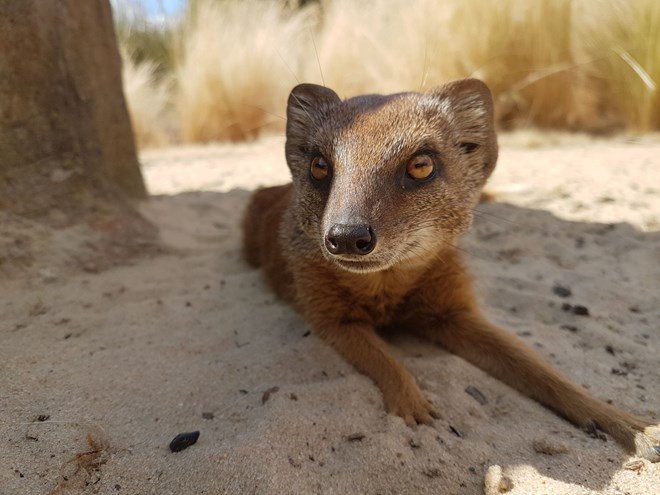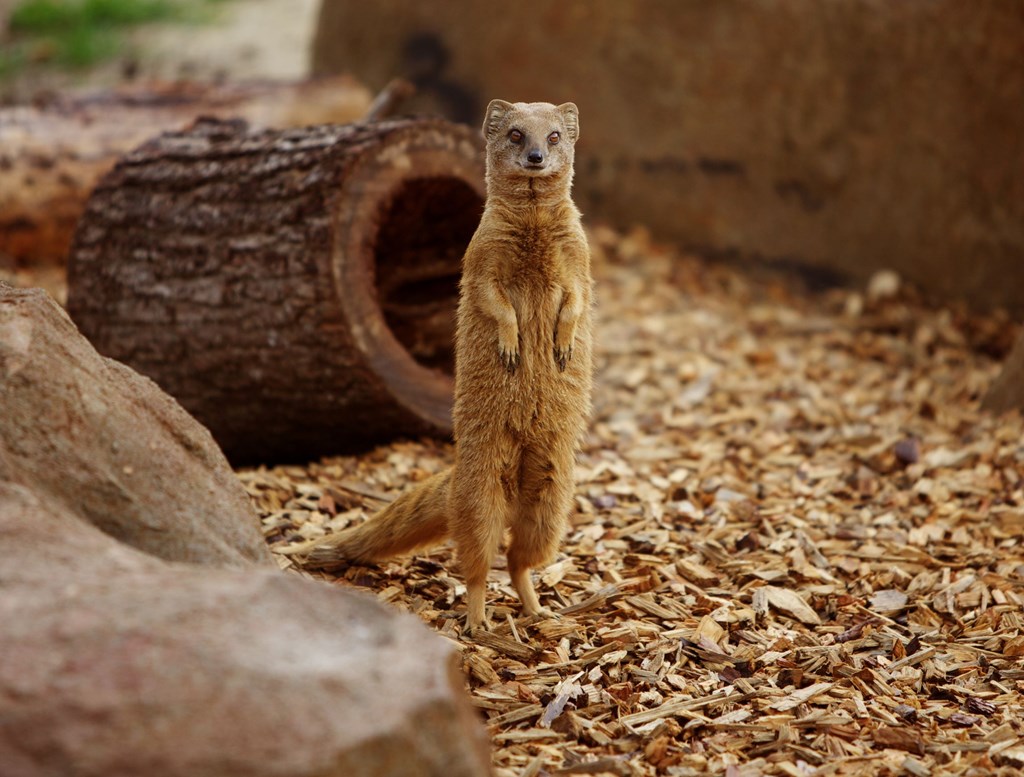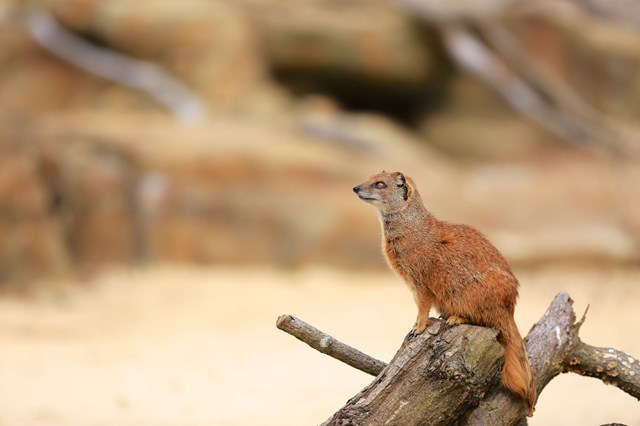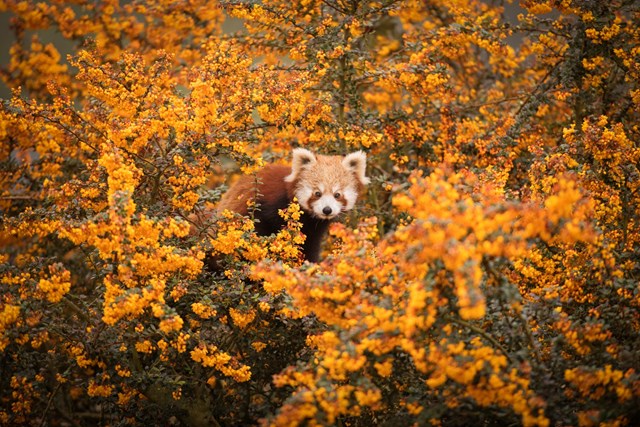
Overview
Woburn Safari Park has a small group of yellow mongoose. These slender, ferret-like carnivores are quick on their feet, showing natural instinct they search for predators in the sky above. Keepers allow natural foraging behaviour, by hiding insects and food in substrates and log piles.
They can be seen in the Desert Springs enclosure in the Foot Safari, where they live alongside the meerkats and porcupines.

All about us
| Distribution: | Africa (South Africa, Namibia, Botswana, Zimbabwe and southern Angola) |
|---|---|
| Habitat: | Grass, scrublands and semi-deserts |
| Height: | 23-33 cm. Tail length 18-25 cm |
| Weight: | 450-800 grams (16-29 oz.) |
| Gestation Period: | 42 - 57 days |
| Lifespan: | Up to 15 years in captivity |
About us
Scientific name: Cynictis penicillata
The yellow mongooses are diurnal which means they are active during the day. These mongooses are known to rest or sunbathe outside of their dens before beginning to feed, travel and forage for food.
They use tail movements to communicate to others (swishing, flicking, and erecting). If threatened or angered they become very vocal, growling and emit a screech to warn or scare off the enemy. Yellow mongooses can also bark when playful or alarmed.

The colour of the coat is usually reddish-yellow to tawny-yellow with a prominent white tip to the bushy tail. Chin, throat and upper chest are paler than the rest of the body. They have rounded ears, rectangular pupil eyes with additional membrane lid, a light yellow or white muzzle, sharp canine teeth, whiskers and a gold, yellow, red, or grey coat. They have 5 digits on their forefeet and 4 on their hind. On their forefeet the underside is bare and they have longer claws, while on the hind, the claws are shorter and the foot is covered in hair.
Yellow Mongoose are carnivorous and feed predominantly on insects and other invertebrates, but they also take small rodents, reptiles, amphibians, birds and eggs, and occasionally carrion (dead meat).
Yellow Mongoose are very social, living in groups ranging from breeding pairs, small family groups or can extend up to 20 individuals. The whole family runs on hierarchy, and this is determined by a central breeding pair and their recent offspring. They may dig their own burrows, but also share dens with ground squirrels or meerkats. These mammals also exhibit territorial behaviour, and are particular about the members in their group. For example, the dominant male would mark territory boundaries with its anal secretions or urine. The dominant male also leaves behind its hair by rubbing its back onto a surface.
Yellow Mongoose courtship behaviour includes purring, nuzzling, licking and biting of the neck and ears. The young are born mostly between October and March after a gestation period of about 42-57 days. The litter size usually ranges from 1-5 (mostly 2-3) cubs and are born in clean chambers in the burrows. Weaning takes place at about 10 weeks of age and they reach adult size after 10 months. It is not known if the male participates in the feeding and caring of the young.
The Yellow Mongoose occurs in numerous protected areas across its range in southern Africa. The population is currently relatively stable and common.
Some species of mongoose such as the Indian Grey Mongoose will boldly attack venomous snakes such as Cobras.
In the 1800s Mongooses were introduced to several islands in Hawaii and the West Indies in order to control the rodent populations on sugarcane plantations. Today this effort has come back to haunt these islands as Mongooses threaten the survival of various native species, particularly birds.

